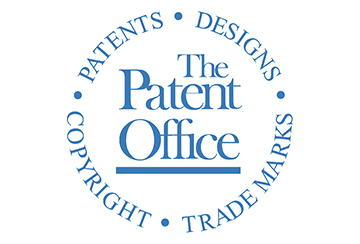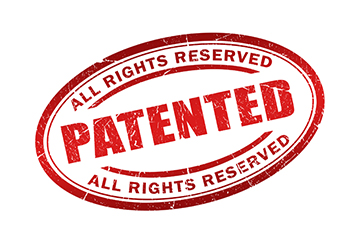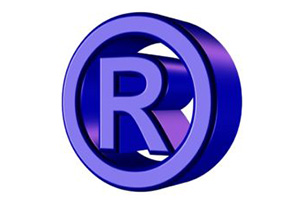Another Patent Eligible Software Invention – Trading Technologies International, Inc.
In Trading Technologies International, Inc. v. CQG, Inc. (“TTI”), the Federal Circuit found claims for a graphical user interface (“GUI”) to be patent eligible subject matter under 35 U.S.C. § 101. This case is another example of how software may be patent eligible. This article discusses that case.
In TTI, the patent owner filed a patent infringement lawsuit against CQC, Inc. (“CQC”) for infringement of U.S. Patents Nos. 6,772,132 (the “‘132 patent”) and 6,766,304 (the “‘304 patent”). CQC moved for judgment asserting the claims of the ‘132 and ‘304 patents were directed to patent ineligible subject matter and thus invalid. The district court denied the motion finding the claims were not directed to an abstract idea, did recite an inventive concept and therefore were patent eligible subject matter under § 101. CQC appealed the district court’s decision.
The ‘132 and ‘304 patents describe and claim a method and system for the electronic trading of stocks, bonds, futures, options and similar products. The patents explain problems that arise when a trader attempts to enter an order at a particular price, but misses the price because the market rapidly moves before the order was entered and executed. This is the problem to which these patents are directed.
Both the ‘132 and ‘304 patents have the same specification so the Federal Circuit treated claim 1 of the ‘304 patent as illustrative. Claim 1 of the ‘304 patent recites:
- A method for displaying market information relating to and facilitating trading of a commodity being traded in an electronic exchange having an inside market with a highest bid price and a lowest ask price on a graphical user interface, the method comprising;
dynamically displaying a first indicator in one of a plurality of locations in a bid display region, each location in the bid display region corresponding to a price level along a common static price axis, the first indicator representing quantity associated with at least one order to buy the commodity at the highest bid price currently available in the market;
dynamically displaying a second indicator in one of a plurality of locations in an ask display region, each location in the ask display region corresponding to a price level along the common static price axis, the second indicator representing quantity associated with at least one order to sell the commodity at the lowest ask price currently available in the market;
displaying the bid and ask display regions in relation to fixed price levels positioned along the common static price axis such that when the inside market changes, the price levels along the common static price axis do not move and at least one of the first and second indicators moves in the bid or ask display regions relative to the common static price axis;
displaying an order entry region comprising a plurality of locations for receiving commands to send trade orders, each location corresponding to a price level along the common static price axis; and
in response to a selection of a particular location of the order entry region by a single action of a user input device, setting a plurality of parameters for a trade order relating to the commodity and sending the trade order to the electronic exchange.
Federal Circuit reviewed the district court’s application of the two-part Alice test. Under the Alice test, a patent is ineligible subject matter (step 1) if a claim is directed to a patent-ineligible concept, i.e., a law of nature, natural phenomenon, or abstract idea, and (step 2), if so, the particular elements of the claim, considered both individually and as an ordered combination, do not add enough to transform the nature of the claim into a patent-eligible application.
The district court first applied Step 1 of the Alice two-step framework. The district court held that, rather than reciting “a mathematical algorithm,” “a fundamental economic or longstanding commercial practice,” or “a challenge in business,” the challenged patents “solve problems of prior graphical user interface devices in the context of computerized trading relating to speed, accuracy and usability.” The district court found that the ‘132 and ‘304 patents are directed to improvements in existing graphical user interface devices that have no pre-electronic trading analog, and recite more than setting, displaying, and selecting data or information that is visible on the graphical user interface device.
The district court explained that the challenged patents do not simply claim displaying information on a graphical user interface. The claims require a specific, structured graphical user interface paired with a prescribed functionality directly related to the graphical user interface’s structure that is addressed to and resolves a specifically identified problem in the prior state of the art, which meets the eligibility of standards of Alice Step 1. The Federal Circuit agreed with the district court’s decision.
While unnecessary given that the district court found that the ‘132 and ‘304 patents were directed to patent eligible subject matter, the district court continued the analysis under Alice Step 2 and determined that the challenged claims recite an “inventive concept.” The district court identified the static price index as an inventive concept that allows traders to more efficiently and accurately place trades using this electronic trading system. The district court distinguished this system from the routine or conventional use of computers or the Internet, and concluded that the specific structure and concordant functionality of the graphical user interface are removed from abstract ideas, as compared to conventional computer implementations of known procedures. Thus, the district court held that the criteria of Alice Step 2 were also met. And the Federal Circuit agreed with the district court’s reasoning.
The technology at issue in TTI is yet another example of patent eligible software. The law related to software related inventions continues to evolve post-Alice and the § 101 landscape will continue to come into focus as more precedential decisions are issued involving patent eligible software claims. As technology evolves software will continue to be critical in creating new and innovative improvements over existing technology. Patent protection is and will remain an integral component in protecting the resources spent developing software. To learn more about Derek Fahey, the author of this article, click HERE.












